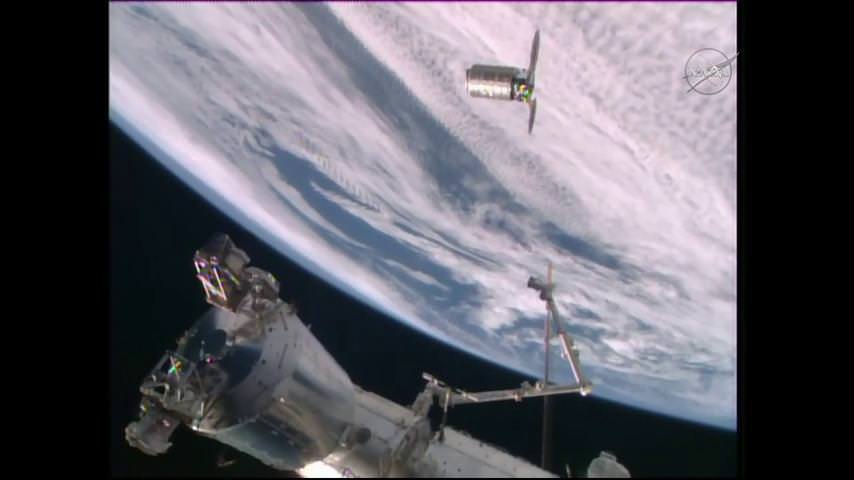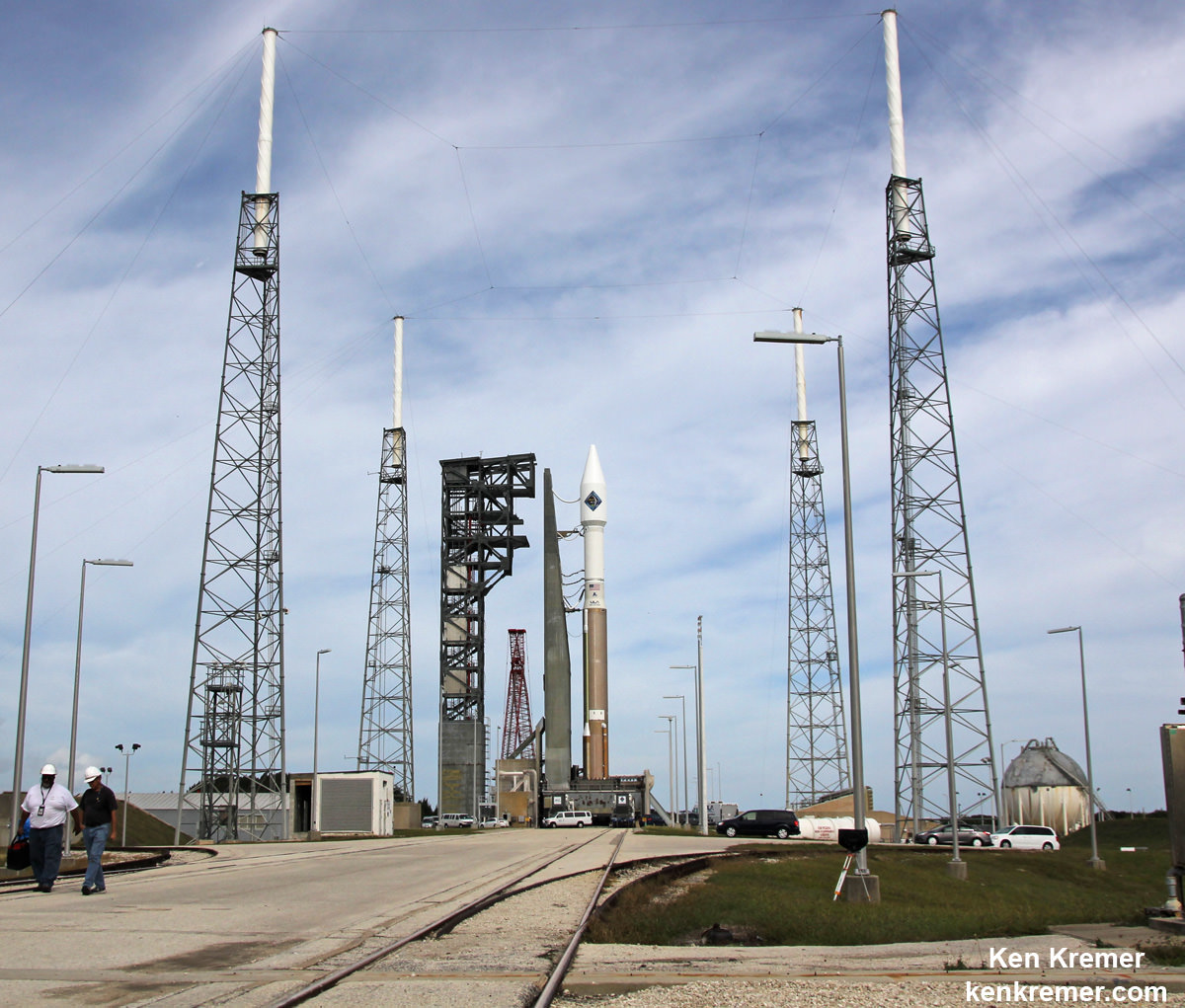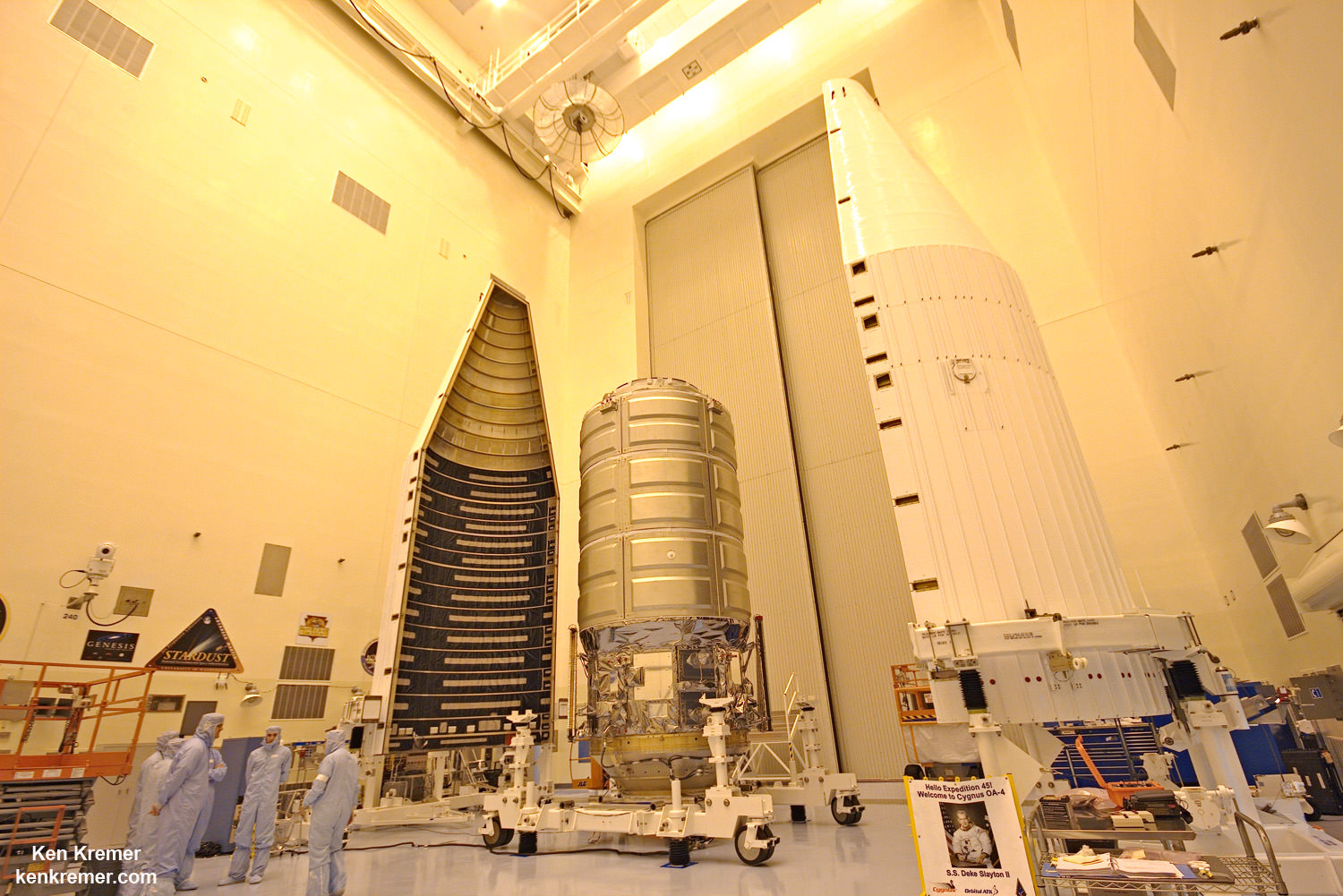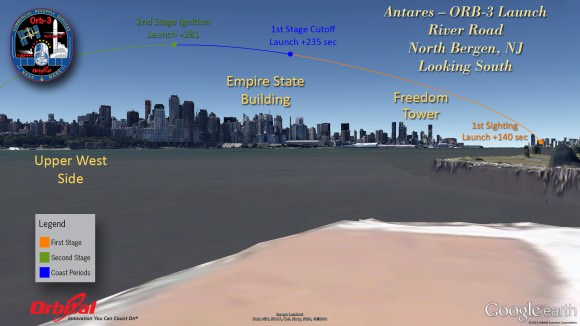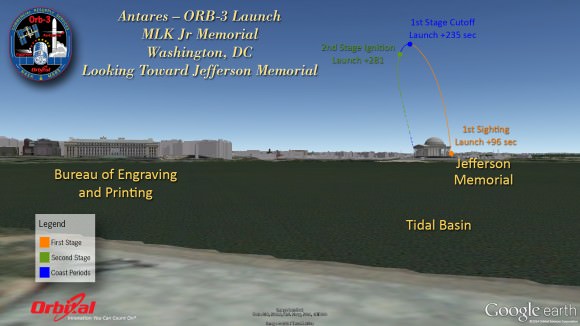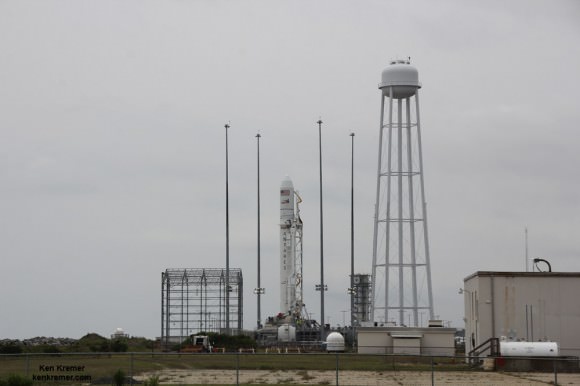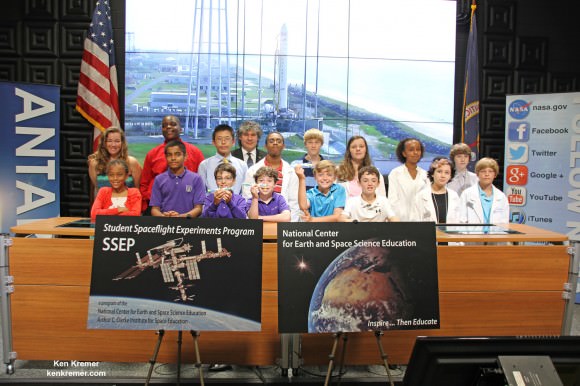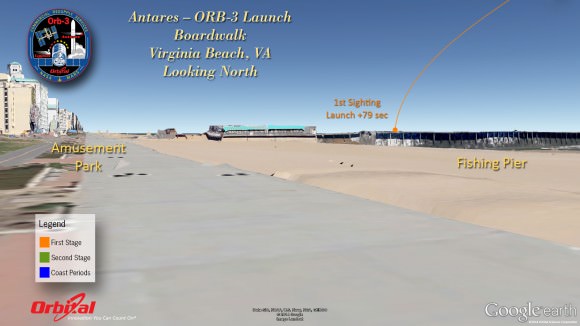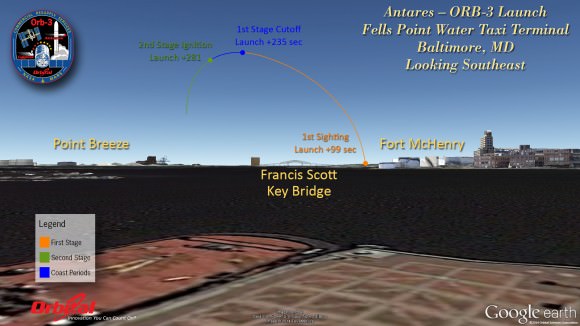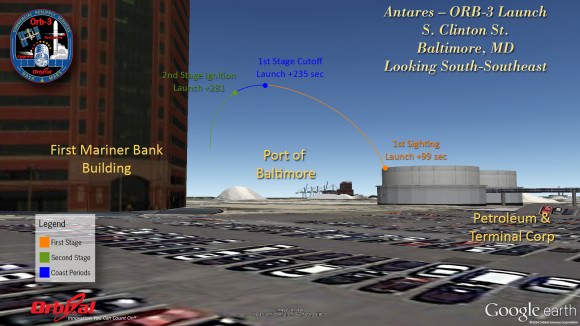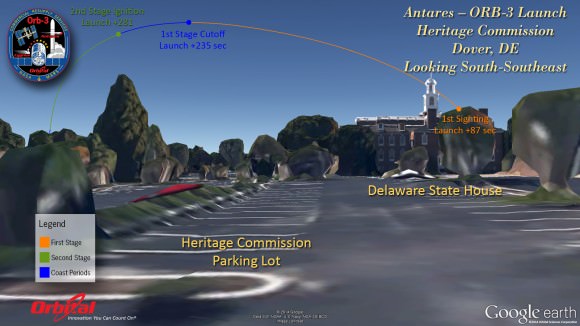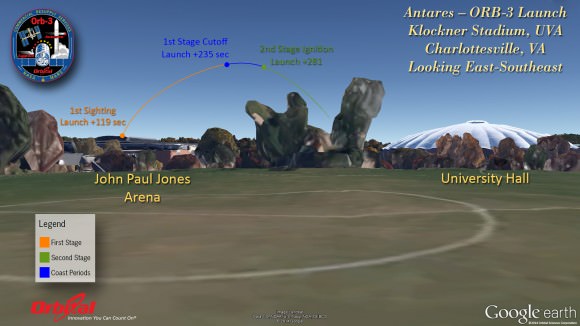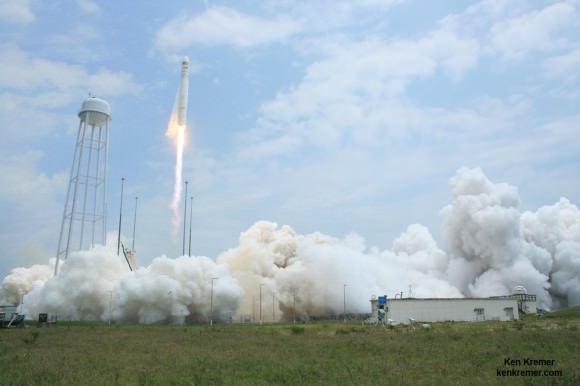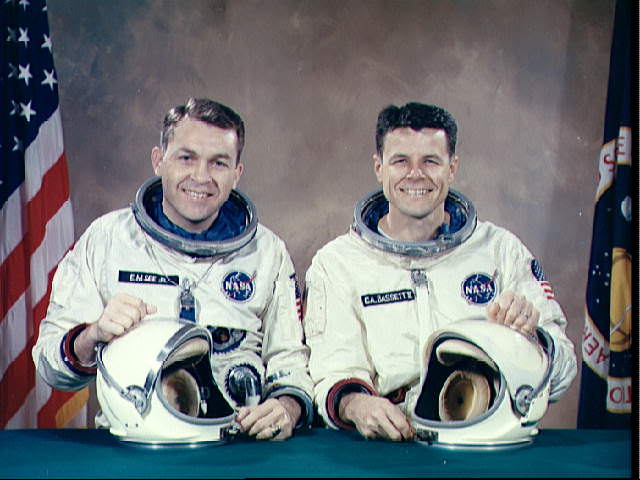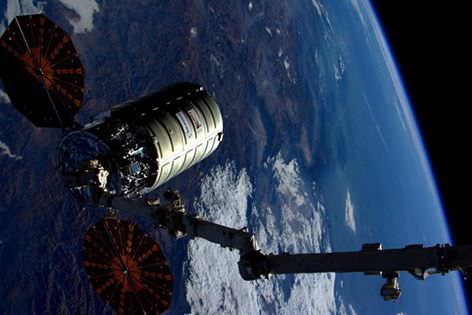
A commercial Cygnus cargo freighter departed the International Space Station (ISS) this morning (Feb. 19) after successfully resuming America’s train of resupply runs absolutely essential to the continued productive functioning of the orbiting science outpost.
NASA astronauts Scott Kelly and Tim Kopra commanded the release of the privately developed Orbital ATK “S.S. Deke Slayton II” Cygnus resupply ship from the snares of the stations Canadian-built robotic arm at 7:26 a.m. EST – while the space station was flying approximately 250 miles (400 km) above Bolivia.
“Honor to give #Cygnus a hand (or arm) in finalizing its mission this morning. Well done #SSDekeSlayton!” Kelly quickly posted to his social media accounts.
The Orbital ATK “S.S. Deke Slayton II” Cygnus craft had arrived at the station with several tons of supplies on Dec. 9, 2015 after blazing to orbit on Dec. 6 atop a United Launch Alliance (ULA) Atlas V rocket from Cape Canaveral Air Force Station in Florida on the company’s fourth NASA-contracted commercial station resupply mission dubbed CRS-4.
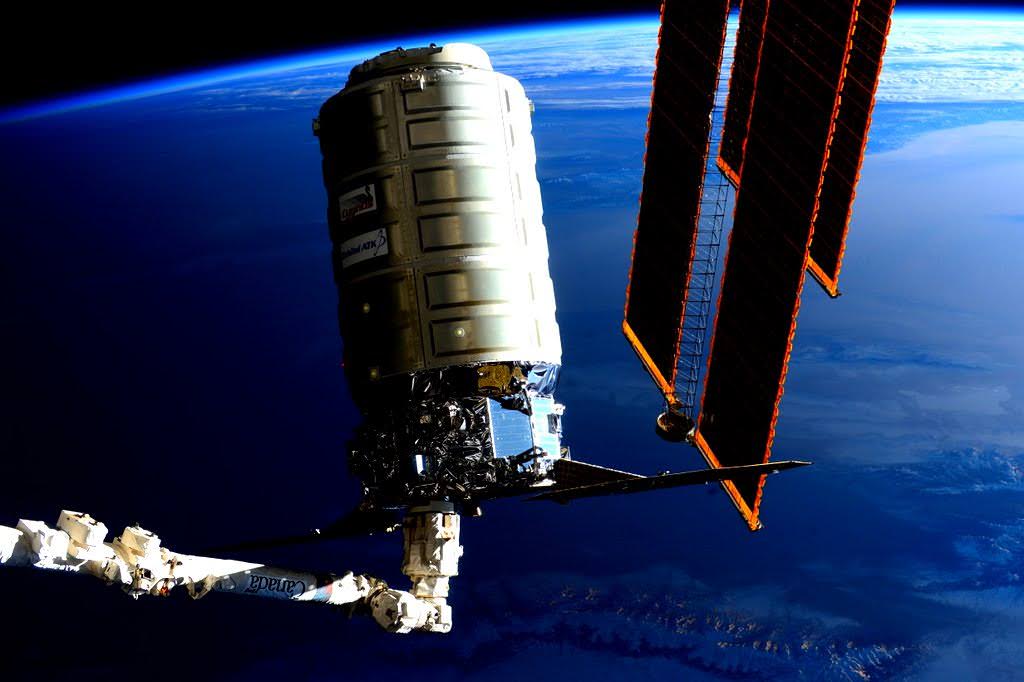
To prepare for today’s release, ground controllers at NASA’s Johnson Space Center first used the station’s 57.7-foot-long (17.6- meter-long) robotic arm, Canadarm2, to unberth Cygnus from its place on the stations Earth-facing port of the Unity module at about 5:38 a.m.
Cygnus came loaded with over three tons of critically needed supplies and research experiments as well as Christmas presents for the astronauts and cosmonauts living and working on the massive orbital lab complex during Expeditions 45 and 46.
Today’s activities were carried live on NASA TV. This brief NASA video shows a few highlights from Cygnus departure:
Altogether, Cygnus spent approximately 72 days attached to the station. During that time the crews unloaded all the research gear for experiments in areas such as biology, biotechnology, and physical and Earth science.
“All good things must come to an end. #Cygnus, your mission was a success! Farewell #SSDekeSlayton,” said Kelly.
Mission controllers at Orbital ATK’s Dulles, VA space operations facility soon commanded Cygnus to fire its thrusters to gradually maneuver away from the station.

Before departure, the crew had loaded Cygnus back up with about 3000 pounds of trash for disposal.
On Saturday, after the spacecraft is far away from the station, controllers will fire the engines twice to pushing the vehicle into Earth’s atmosphere for a fiery reentry where it will harmlessly burn up over the Pacific Ocean.
Meanwhile, Kelly himself will also be departing the ISS in about ten days when his historic ‘1 Year ISS Mission’ concludes on March 1, when he returns to Earth on a Russian Soyuz capsule along with his cosmonaut crewmates Mikhail Kornienko and Sergey Volkov.
December’s arrival of the Orbital ATK Cygnus CRS-4 cargo freighter – also known as OA-4 – represented the successful restart of American’s critically needed cargo missions to the ISS following a pair of launch failures by both of NASA’s cargo providers – Orbital ATK and SpaceX – over the past year and a half. It was the first successful US cargo delivery mission in some 8 months.
Cygnus was named the ‘SS Deke Slayton II’ in memory of Deke Slayton, one of the America’s original seven Mercury astronauts. He was a member of the Apollo Soyuz Test Flight. Slayton was also a champion of America’s commercial space program.
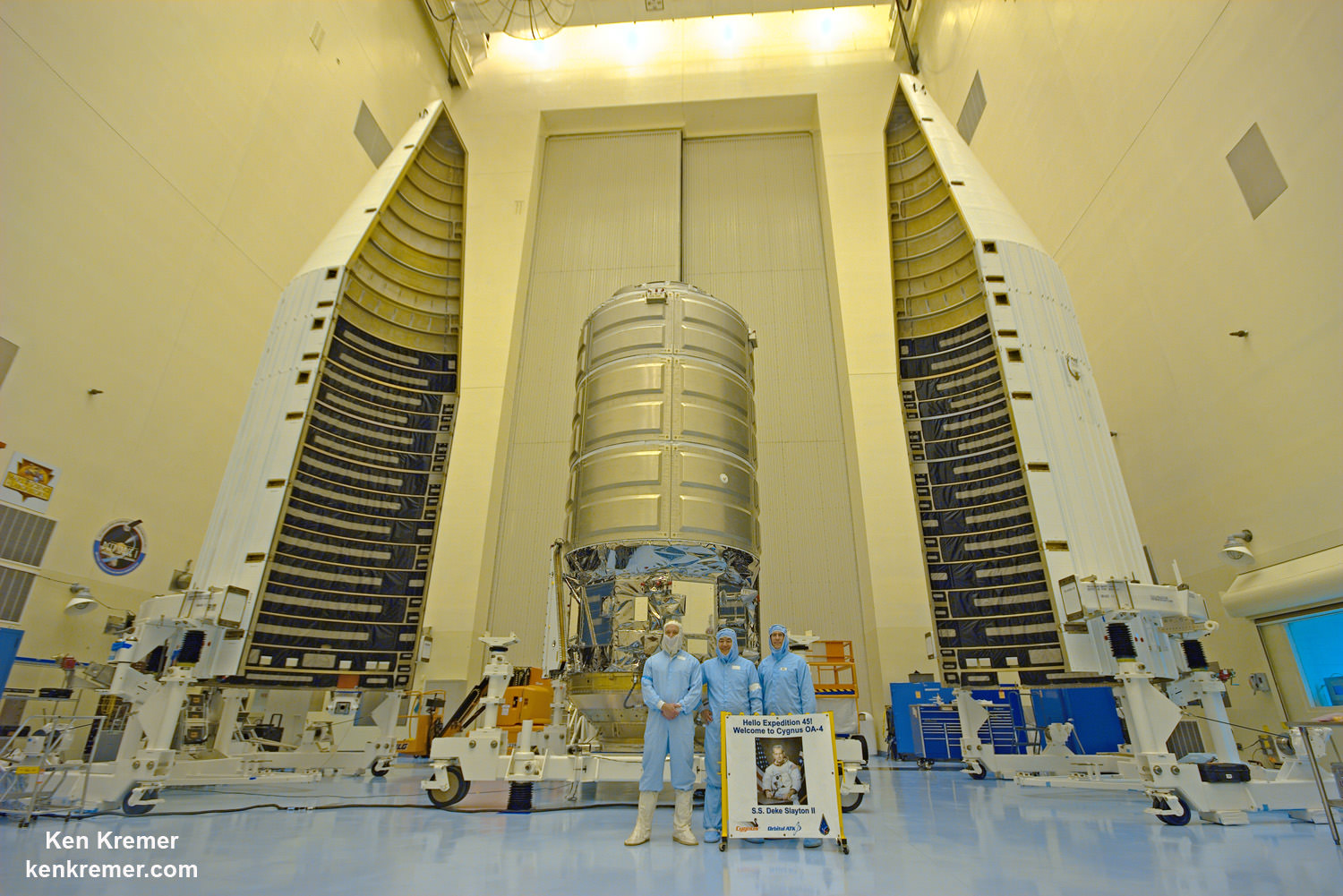
CRS-4 counts as the first flight of Cygnus on an Atlas and the first launch to the ISS using an Atlas booster.
This is also the first flight of the enhanced, longer Cygnus, measuring 5.1 meters (20.5 feet) tall and 3.05 meters (10 feet) in diameter, sporting a payload volume of 27 cubic meters.
“The enhanced Cygnus PCM is 1.2 meters longer, so it’s about 1/3 longer,” Frank DeMauro, Orbital ATK Vice President for Human Spaceflight Systems Programs, said in an exclusive interview with Universe Today.
This Cygnus also carried its heaviest payload to date since its significantly more voluminous than the original shorter version.
“It can carry about 50% more payload,” DeMauro told me.
“This Cygnus will carry more payload than all three prior vehicles combined,” former NASA astronaut Dan Tani elaborated.
The total payload packed on board amounted to 3513 kilograms (7745 pounds), including science investigations, crew supplies, vehicle hardware, spacewalk equipment and computer resources.
Among the contents are science equipment totaling 846 kg (1867 lbs.), crew supplies of 1181 kg (2607 lbs.), and spacewalk equipment of 227 kg (500 lbs.).
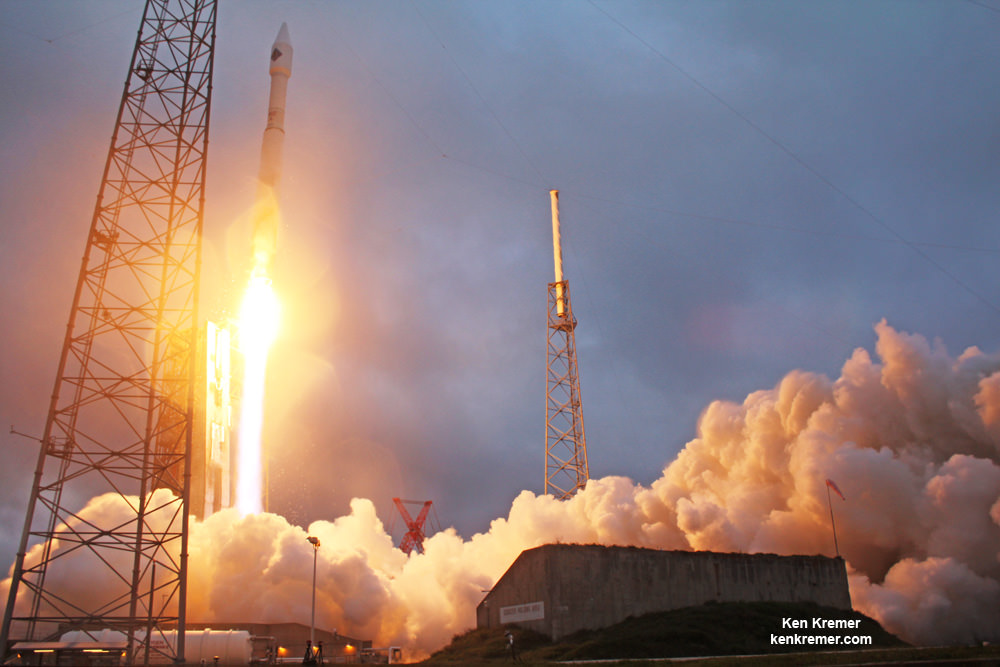
Orbital ATK holds a Commercial Resupply Services (CRS) contract from NASA worth $1.9 Billion to deliver 20,000 kilograms of research experiments, crew provisions, spare parts and hardware for eight Cygnus cargo delivery flights to the ISS.
Orbital ATK has contracted a second Cygnus to fly on an Atlas on the OA-6 mission, currently slated for liftoff around March 22, 2016. Liftoff was delayed about two weeks to decontaminate an infestation of mold found in cargo already packed on the Cygnus.
NASA has also contracted with Orbital ATK to fly three additional missions through 2018. Orbital also recently was awarded six additional cargo missions by NASA as part of the CRS-2 procurement.
Orbital ATK hopes to resume Cygnus cargo launches with their own re-engined Antares rocket from NASA’s Wallops Flight Facility in Virginia this summer.
Stay tuned here for Ken’s continuing Earth and planetary science and human spaceflight news.

